|
|
Remember Public Call Office (PCO) booths? And the person at the counter who performed the vapid exercise of collecting money for the calls? Fast forward to the era of mobile phones – the rush to the ‘recharge’ store, and the instant recharge by the person at the store who almost knew your number by heart. Are these scenarios relevant anymore? Or more specifically, are these job roles and skills relevant anymore?
According to John Seely Brown and Douglas Thomas: “The half-life of a learned skill is 5-years” – this means that much of what you learned 10 years ago is obsolete and half of what you learned 5 years ago is irrelevant. And by 2022, no less than 54%* of all employees will require significant reskilling and upskilling.
Clearly the need for adapting, evolving and reskilling has never been more immediate; Read on to know more about the various constructs that are rapidly revolutionizing the talent ecosystem, and how the future of work will look like.
The prerequisites to qualify as ‘skilled talent’ have assumed unprecedented dynamicity, given the rate at which disruption is happening across every industry vertical. Let us delve into the factors that define the global talent landscape.
With the job roles that we have known and seen our predecessors perform rapidly becoming irrelevant, there is a fresh crop of job roles that have emerged in the market. The following are the skills that have emerged in various functions across the organizational value chain.
The emergence of omnichannel customer support and the increasing focus on operationalizing customer experience has given rise to new roles like social media executive, video support representative, Customer Service Email representative, Live Chat agent, etc. The skills required in the customer support space have hence evolved from conventional ones like calls handling, providing instructions to customers through voice, to social media platform handling, email etiquette, and live chat support.
Gone are the days when the HR function was considered a mere support function, that doesn’t have representatives at the C-suite or was not involved in strategic business decisions. The disruptions in the talent ecosystem, evolving preferences of the workforce, and the digitalization of workspaces have led to the HR function engaging in critical initiatives that directly impact the bottom-line. This has given rise to new roles, case in point, organization development (OD) specialist.
This role requires new areas of expertise such as organizational change management, organizational behavior, and Industrial-Organizational psychology, etc.
Marketing is yet another function that has been hit by the omnichannel phenomenon. The vertical no longer just leverages conventional media like television, radio, newspapers, books, and magazines, but is also actively leveraging digital media given the rapidly increasing penetration of the internet. This has spurred the need for expertise in posting Google and Facebook ads, the ability to draw actionable insights from Google Analytics, and proficiency in marketing automation systems like Eloqua and Marketo.
Sales Engineering – an interesting hybrid of technical expertise and the skill to sell the technology, is an emerging role in the technology space. This has led to the creation of new roles in accordance with the expertise in specific technology – like a cloud sales engineer or an Enterprise software engineer who understands cloud technology or Enterprise software and is able to sell a solution to the customer. This requires the resource to have experience in sales and also possess the ability to communicate highly technical concepts.
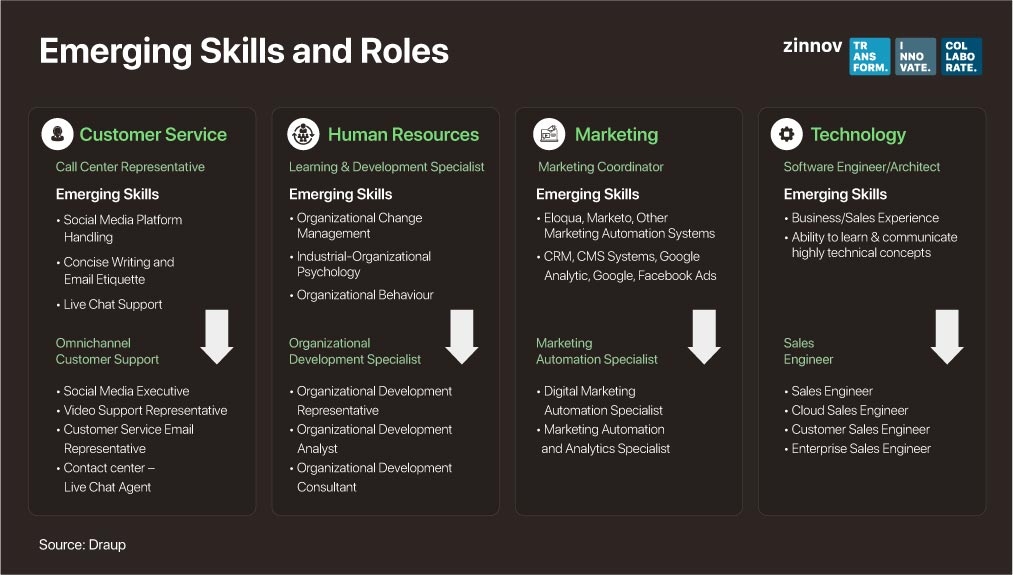
With the function-specific evolution of roles clear, a critical phenomenon that is making a lot of job roles redundant and has spurred a plethora of new-age skillsets like AI, ML, Data Analytics, etc. is Automation and hence needs to be discussed.
Nearly 47% of the job roles are at a high risk of automation by 20301. However, the paucity of skilled talent hampers the pace of the adoption of automation projects. The demand for AI & Data Analytics talent is estimated to grow three-fold by 2025, whereas the growth of the talent pool is unlikely to catch up with the increasing demand, thereby widening the skill gap (Demand – Supply ratio by 2025 is estimated to be 25,00,000: 12,00,0002).
The Job Roles that are highly vulnerable to become redundant due to automation include Front Desk Receptionists, Tellers, Cashiers, Travel Agents, Merchandiser, Drivers, Data Entry Clerk, Retail Store Executives, and Customer Support executives.
There are various factors that will revolutionize the future of work – The composition of the workforce, cultural, and structural changes in organizations, the preferences of the workforce, and the evolution of approaches adopted across the talent value chain. Let us delve into the critical factors:
Multi-generational workforce: According to WHO, by 2050, people aged over 60 will constitute over 22% of the world population. Trends also suggest that the workforce is well poised to become dominated by the millennials, in the next few years. Young graduates fresh out of school are also being pumped in significant numbers into the job market. Therefore, clearly a multigenerational workforce is the workforce of the future.
Digital workspaces, Knowledge on demand, new business models are among the multiple other factors that will influence the future of work.
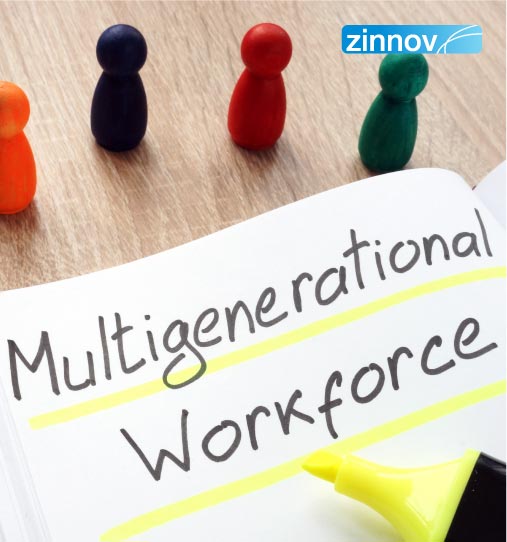
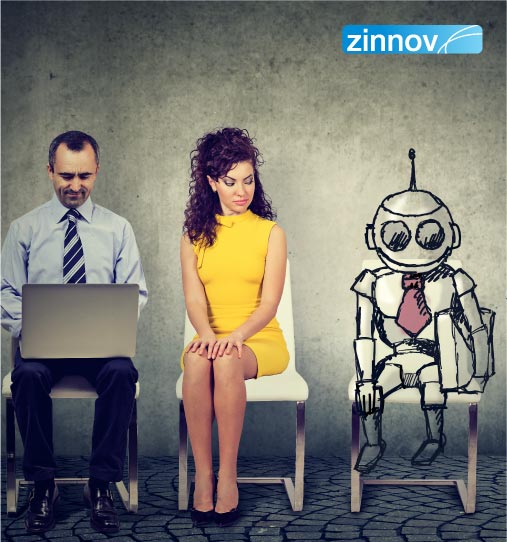
Collaborating with the ‘Digital Worker’: When we analyze the effects of automation, it is not merely loss of jobs, but augmented human capabilities, and the need for human-machine collaboration which emerges as key outcomes. The workforce of the future will clearly be a combination of human and ‘digital workers.’ These Digital workers are human-centric, and facilitate automation of mundane, repetitive tasks freeing the bandwidth of the millennial and Gen-Z workforce to focus on tasks that add better value.
The rise of the gig economy: Nearly 1 in 10 workers in the UK work on platforms3 at least once a week. This number is an indicator of how the gig economy is growing rapidly. With increasing focus on flexibility, mobility, and the quality of life, the alternative workforce which encompasses freelancers, gig workers, crowd workers, contractors, etc. is burgeoning.
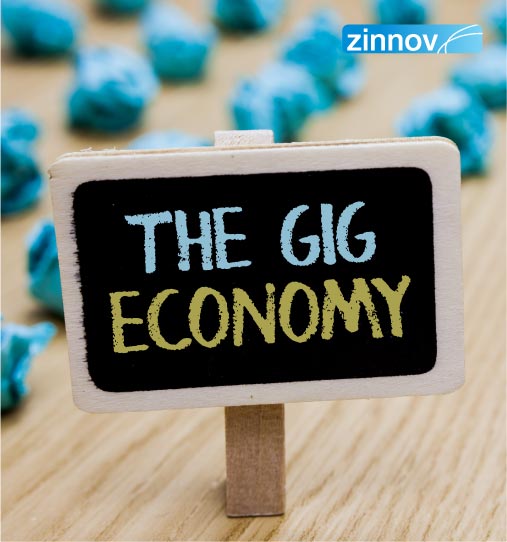
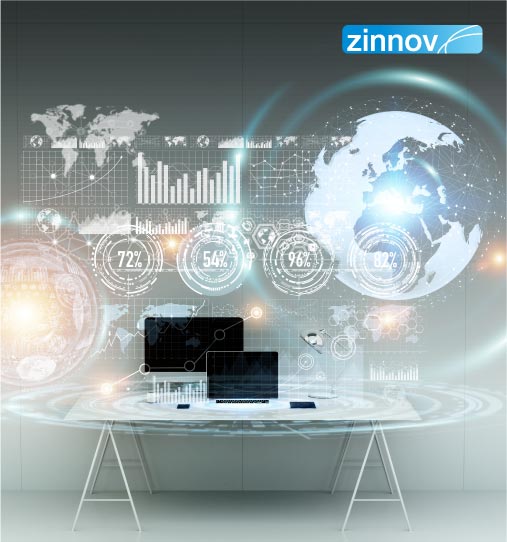
Digital Workspaces: A typical workday in 2025 will allow the employee to update availability on collaboration work tool, interact with holograms of stakeholders, use smart boards, and have a virtual assistant order food for her. The digital workspace which offers mobility, fosters innovation, attracts young talent, and accommodates the increasing share of the gig workforce, is clearly the workspace of the future.
The I&D Narrative: Inclusion and Diversity is no longer just an HR initiative but a mandatory entry in the leadership agenda; because organizations have realized the role it plays in fostering innovation, and the impact well-formulated and implemented I&D policies have on the bottom-line. Companies are therefore actively encouraging LGBTQ+ inclusion and conducting returnship programs to ensure seamless integration of women who have taken a break, into the mainstream workforce. The I&D rage is only getting profounder and is poised to be a key characteristic of the future workplace.

The Times are A-Changing and rapidly so. A workday in a future will mean collaborating with the robots, dealing with coworkers from multiple generations, accommodating the working styles of the gig workforce and checking out microlearning nuggets on-the-go. The questions that naturally follow are:
Is the workforce preparing to embrace the inevitable automation? Are the leadership and the employees trained to work seamlessly with the alternative workforce? Are organizations equipped to manage a multigenerational workforce composition? Is the learning and development function skilled enough to adapt to the evolving learning patterns?
These questions are clearly suggestive of the need to imbibe the culture of continuous learning and reinventing, both at an individual and an organizational level.
In this age of constant disruption, irrespective of the points in an individual’s talent lifecycle, or the maturity of an organization, it is extremely critical to predict, plan, and follow an ongoing reskilling regimen to remain relevant.
References:
* – World Economic Forum – Future of Jobs 2018 report
1 – Oxford Academics: Carl Benedikt Frey, Economist & Michael Osborne, Professor
2 – A study by DRAUP
3 – Trade Union Congress, UK